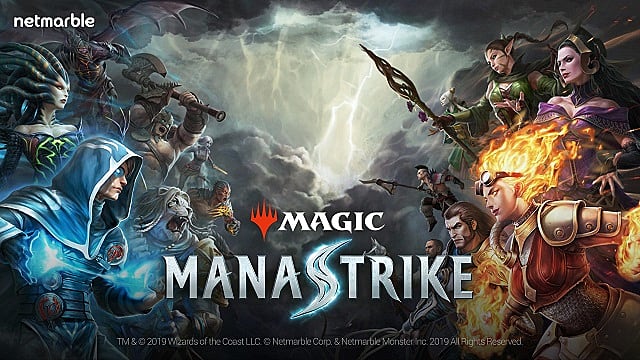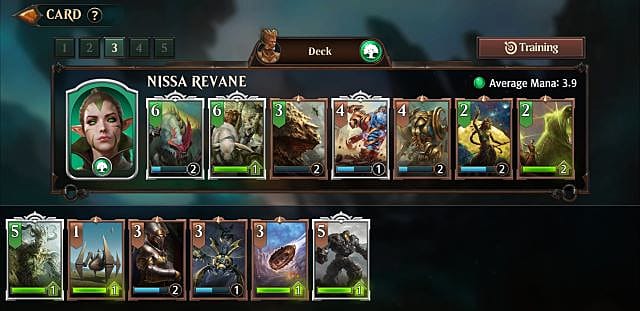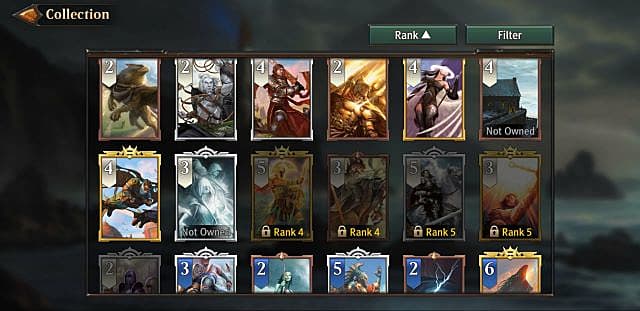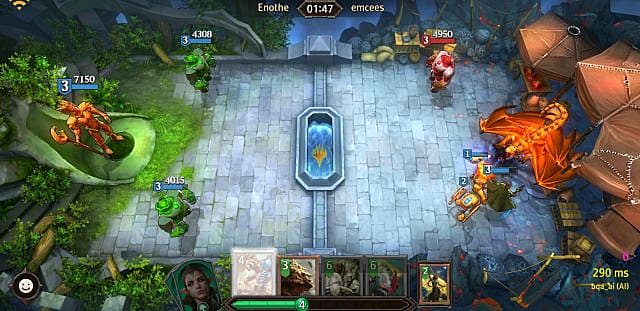

Magic: The Gathering is a card game that's been around for decades. It's a titan of the industry, and it deserves to be, with a wealth of exciting mechanics, fascinating lore, and some beautiful artwork.
Well, the brains over at Wizards of the Coast, the creators of MtG, have decided it's time to branch out a bit. One of those branches is Magic: Legends, the upcoming Diablo-like. Another branch, though, is Magic: ManaStrike, which is a real-time PvP strategy game that uses characters from the card game.
It's Magic, Jim, but Not as We Know It

Not only does ManaStrike use MtG characters, but it also uses the cards. This is perhaps the most interesting thing about the mobile title, at least to anyone who's a fan of MtG. Seeing how the creatures and spells I love are translated into a different style is fascinating.
Take Giant Growth, for example, a card that gives a creature extra strength and defense in the card game. In ManaStrike, it provides a creature with additional health instead of strength. Every new card I unlocked gave me a new chance to see how the developers had implemented a classic card in a new way. That alone was enough to keep me playing, but thankfully, the gameplay is incredibly fun as well.
Before you actually go into a match, you have to build your deck. Now, you only have to choose a handful of cards instead of 60, so you need to think really carefully about which cards to include. It's a hyper-focused version of deckbuilding that is simpler than its counterparts, but an error here is often more obvious when it comes to the battles themselves. You must balance mana costs more than anything else, but you can unlock some powerful synergies as you rank up.
See, you gain new cards as you open packs, and you can get packs by winning battles, ranking up, and progressing through the battle pass. There is a free version and there is a paid version of the battle pass, so it's familiar territory in that sense.
30-50 Feral Boars (Overrun)

In ManaStrike, the cards you open can only be from the ones you've unlocked, and you can only unlock new cards by ranking up. The further you go, the larger the pool of cards becomes. Often, these higher rank cards are more powerful, but it's just as likely that they are simply more complicated, rather than just being stronger.
The system is a good way of keeping strategy in line with your experience with the game. It also gives you a reason to keep playing and rank up, because every new card presents you with a new potential game plan.
That being said, the game plan, at least initially, isn't all that complicated. The map is set up with two lanes and split into two halves. One half for you, one for your opponent. Each lane has a guardian at either end with a boss protecting both of them. If you kill the boss, you win. Simple.
However, you can win in other ways too, which is good, because sometimes the three-minute matches just aren't long enough to decide things decisively. You can earn a point by taking out a lane guardian; if you have taken out both guardians, but your foe has only taken out one, then you win because you've got more points.
I Need a (Hero) Planeswalker

Each deck is headed up by a Planeswalker, and they decide what cards you can include in your deck. If you have a green Planeswalker, then you can use green cards. Simple enough.
In battle, you can summon your Planeswalker to march forward, and you can even use their special ability. Plus, they act as a mobile summoning area. Normally, you can only summon on your side of the field, but a Planeswalker has a field around them that you can use to summon new units.
You summon units using mana, which regenerates over time. Strong units cost more mana, but it's not that simple. You've also got air units, ground units, and buildings. Plus, spells of different sorts. It seems like a lot, but it's introduced slowly, so you'll have lots of time to adjust.
It all comes together to make for some really interesting battles. Though the strategy element isn't overly intricate, there are plenty of little bits that add up to create something genuinely fun to play. Plus, while you can only fight standard battles initially, you eventually unlock different events to take part in, too.
Magic: ManaStrike Review — The Bottom Line
Pros
- Fun and easy-to-learn gameplay
- A surprising amount of depth
- Seeing cards come to life is joyful
Cons
- Gameplay very much depends on the strength of your opponents
- Early battles are a bit too simple
Magic: ManaStrike is an interesting strategy game. There are enough little new things scattered around to make it stand out from the crowd, but the formula is definitely one you've seen before.
There is a constant stream of rewards for those who don't want to spend money, too, so you never feel hamstrung for not wanting to buy in-game items. It's fun and has enough depth to make for some interesting strategies, the more you play. Plus, seeing the MtG characters and cards brought to life is incredibly endearing. It's definitely worth a look, and almost definitely worth your time, too.
[Note: Netmarble provided a copy of Magic: ManaStrike for the purpose of this review.]
0 comments:
Post a Comment